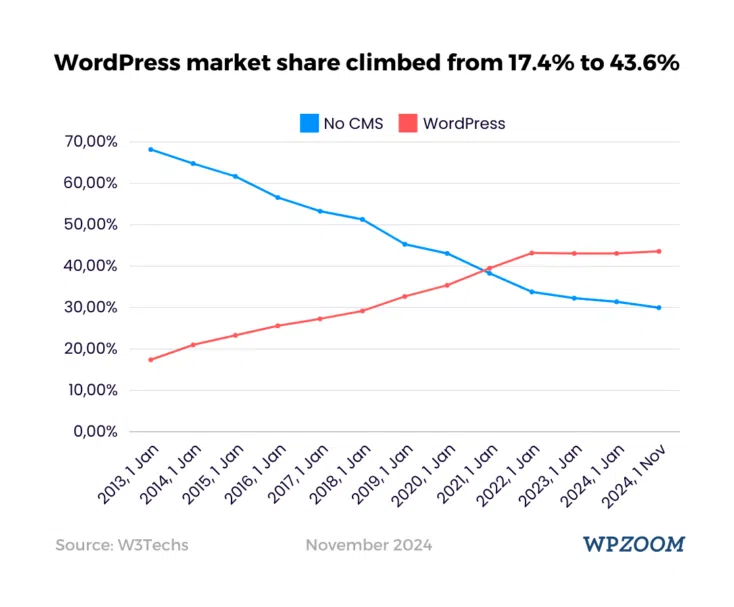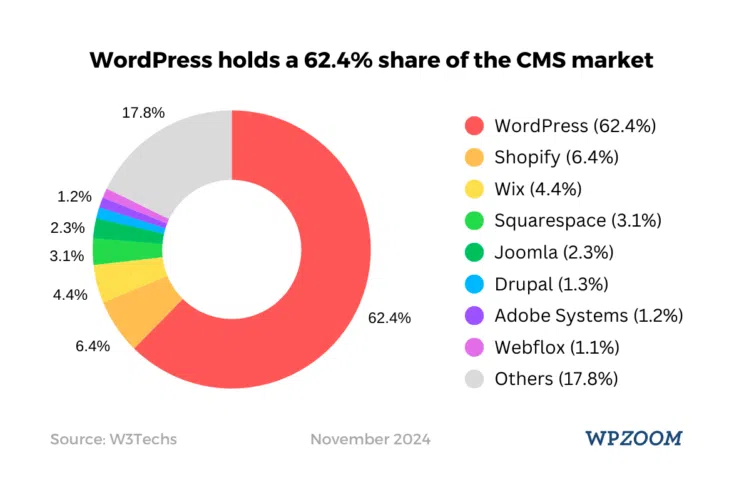Let’s be honest nobody enjoys a website that crawls along slower than a snail.
I’ve seen it happen countless times – a beautifully designed website painstakingly crafted completely tanked by agonizingly slow loading speeds.
It’s like serving the most delicious gourmet meal on a chipped wobbly plate – the potential is there but the experience is utterly ruined.
That’s why website performance testing is absolutely crucial.
It’s not just about speed; it’s about ensuring a positive user experience and ultimately the success of your online presence.

Understanding the “Why” Behind Performance Testing
Think of performance testing as a comprehensive health check for your website.
It’s all about measuring its stability responsiveness how it handles traffic spikes (scalability) and its overall throughput.
It’s like taking your car for a service; you don’t wait until it completely breaks down before addressing potential problems.
Why bother with all this testing you ask? Well the benefits are huge.
Faster loading times translate directly into higher user engagement lower bounce rates (those pesky users who leave your site before even exploring it!) and improved search engine rankings – something every website owner dreams of! Plus anticipating and preventing performance bottlenecks prevents those frustrating moments when your site grinds to a halt especially during traffic peaks.
You’ve poured your heart and soul into this right? Let’s make sure it shines.
The Impact of Slow Loading Times
Google’s research shows that a staggering 53% of mobile users abandon a page that takes longer than three seconds to load.
Think about that – over half your potential audience is disappearing before they even get a chance to see what you have to offer! That’s a massive loss in terms of potential conversions sales and overall brand visibility.
Beyond user frustration slow loading times also directly impact your search engine rankings.
Google and other search engines prioritize user experience and a slow website is a poor user experience.

It’s a vicious cycle – slow loading times lead to high bounce rates which in turn signals to search engines that your site isn’t valuable resulting in lower rankings and even less visibility.
You simply can’t afford to ignore this!
Diving into Performance Testing Methods
There’s a whole arsenal of performance testing methods available each designed to reveal different aspects of your website’s performance.
You won’t need to use them all but understanding their strengths allows you to tailor your testing approach to your specific needs.
Load Testing: Simulating Real-World Traffic
Load testing is like putting your website on a stress test.
It simulates real-world traffic patterns allowing you to see how your site behaves under various load conditions.
Check our top articles on Turn Your Slow Website Into a Speed Demon: Performance Testing Tips
This helps identify bottlenecks and potential points of failure before they affect your actual users.


You can use tools to simulate thousands of users hitting your site simultaneously revealing whether your infrastructure can handle such traffic.
I’ve seen companies underestimate this causing their sites to crash during product launches or major promotions – a costly mistake!


Think about planning a large-scale event.
You wouldn’t just show up and hope everything goes smoothly.
You’d test the venue’s capacity ensure there are enough staff and check all the equipment.
Load testing does the same for your website.
It’s vital for identifying capacity limits uncovering issues with your database server or application code that may slow down performance under pressure before they impact your users and revenue.

It’s crucial for anticipating and preventing disasters!
Stress Testing: Pushing Your Site to the Limit
Stress testing takes things a step further than load testing; it’s about pushing your website beyond its normal limits to see how it handles extreme conditions – like an unusually high surge of traffic an unexpected spike of users or a major server issue.
This type of testing is useful for identifying your website’s breaking point and determining its resilience.
This is where you find out if your site will gracefully degrade or spectacularly collapse under extreme pressure.
Imagine stress testing like a marathon runner pushing their body to its limits to build stamina and endurance.
The same principle applies to your website.
By identifying its breaking point you can strengthen its resilience and prevent it from crashing during critical periods.
🚀 Yo, website feeling sluggish? Don’t let slow load times kill your vibes! 🐌 Check out this guide to supercharge your site’s speed and watch those rankings climb! Learn how to make your website blazing fast!
It’s about building a website tough enough to weather any storm!
Utilizing Free Performance Testing Tools
You don’t need a massive budget to get started with performance testing.
Several excellent free tools can provide invaluable insights into your website’s performance.
Google PageSpeed Insights: Your Friendly Neighborhood Speed Advisor
Google PageSpeed Insights is an absolute gem for beginners.
It provides easy-to-understand speed scores for both desktop and mobile versions of your site and offers actionable recommendations for improvement.
It’s a user-friendly tool that breaks down complex performance metrics into manageable chunks.
It’s like having a personal website speed advisor guiding you step by step.


I often recommend this tool to clients who feel overwhelmed by technical jargon.
It simplifies things providing clear advice that’s easy to follow without getting bogged down in complex technical details.
It’s a great starting point for any website owner looking to improve their site’s performance.
Start here!
Pingdom Tools: A Detailed Performance Audit
Pingdom Tools is a more in-depth performance auditor giving your website a grade out of 100 and offering detailed breakdowns of its strengths and weaknesses. Its page analysis tab allows you to drill down into specific problem areas providing you with a precise understanding of where bottlenecks exist. This is a good tool to use after you’ve used Google PageSpeed Insights for a more comprehensive look.
🚀 Yo, website feeling sluggish? Don’t let slow load times kill your vibes! 🐌 Check out this guide to supercharge your site’s speed and watch those rankings climb! Learn how to make your website blazing fast!

It’s like a mechanic doing a full inspection of your car.
It will not only tell you that something’s wrong but also pinpoint exactly where the problem lies and suggest solutions.
This level of detail allows you to tackle performance issues more efficiently and effectively.
Yellow Lab Tools: The Ultimate Customizable Testing Platform
Yellow Lab Tools offers extensive customization options – allowing you to simulate various user scenarios network conditions devices and so on.
It’s the ultimate Swiss Army knife of performance testing.

It’s far more detailed than the other tools but you’ll need to understand the data a bit better.

Its comprehensive results are split into different categories which allows you to get a really granular understanding of how different factors impact your website’s speed. It’s the best tool to utilize after you’ve found problems in your site with other tools. This allows you to fully understand where to focus your improvement efforts.
Interpreting Your Test Results: Data Visualization and Continuous Testing
The real magic happens after you’ve run your tests.
Raw data means little without proper interpretation and analysis.
This is where data visualization and continuous testing comes into play.
Visualizing Your Data: Bringing Your Insights to Life
Don’t just leave your test results sitting in a spreadsheet.
Transform them into insightful visuals – charts graphs and other compelling representations – that easily highlight trends patterns and problem areas.
This makes identifying areas for improvement much easier and provides compelling visual evidence for stakeholders clients or team members who may not be tech-savvy.
Think of data visualization like creating a map to guide your optimization journey.
A well-crafted visualization makes complex data understandable at a glance revealing hidden patterns that could otherwise be overlooked.
It’s about making your data speak volumes!

Continuous Testing: The Ongoing Optimization Cycle
Testing isn’t a one-time event; it’s an ongoing process.
As you implement changes based on your test results you need to continuously test to ensure those changes are having the desired effect.
It’s a cycle of testing analyzing optimizing and repeating until you achieve peak performance.
Imagine it like training for a marathon.
You wouldn’t just train for a week and then run the race; you’d train for months continuously tracking your progress adjusting your training plan as needed.
Continuous testing is the same – it’s an iterative process of refinement and improvement.
It’s not a sprint but a marathon toward optimal website performance.
Simple Website Optimization Techniques
Sometimes dramatically improving your website’s speed is simply a matter of addressing some simple yet often overlooked issues.
Optimize Images: Don’t Let Images Weigh You Down
Large unoptimized images are significant culprits when it comes to slow loading times.
They consume considerable bandwidth and server resources.
Compressing your images without sacrificing too much quality is a major win.
Aim for image file sizes under 200KB wherever possible.
Use tools to help you do this!
Implement Browser Caching: Leverage Browser Memory
Implement browser caching to allow browsers to store frequently accessed components of your web pages.
Subsequent visits become significantly faster as the browser loads from its cache rather than repeatedly fetching everything from your server.
Minimize Redirects: Streamline the Path to Your Content
Excessive redirects create unnecessary delays.
Each redirect adds processing time slowing down your website.
Keep redirects to a minimum and use them only when absolutely essential.
Keep Your Plugins Updated: Security and Performance
Outdated plugins often introduce security vulnerabilities and performance inefficiencies.
Regularly update your plugins to ensure they remain secure and efficient.
Choose the Right Hosting: The Foundation of Speed
The right hosting provider makes a massive difference.

Just like a high-performance car needs quality fuel your website needs a reliable and optimized hosting environment.
Don’t underestimate this!
Choosing a High-Performance Hosting Provider
Many hosting providers make grandiose claims about speed but not all deliver.
Choosing the right host is critical to ensuring optimal website performance.

Independent Benchmarks: Look Beyond Marketing Hype
Don’t rely solely on hosting providers’ marketing claims.
Independent benchmarks such as those from Review Signal offer unbiased assessments of different hosting providers’ performance.
They test across multiple key factors helping you make an informed decision.

Globally Distributed Network: Serving Users Worldwide
A globally distributed network of servers ensures that users receive content from the geographically closest server minimizing response times and maximizing speed.

It’s like having multiple express lanes leading to your website regardless of where users are located.
🚀 Yo, website feeling sluggish? Don’t let slow load times kill your vibes! 🐌 Check out this guide to supercharge your site’s speed and watch those rankings climb! Learn how to make your website blazing fast!
Scalable Resources: Adapting to Growing Needs
Choose a host that adjusts its resource allocation based on your site’s needs rather than imposing rigid limits.
This is particularly crucial during traffic spikes ensuring your site remains responsive even during periods of high demand.
Online Reviews: A Valuable But Imperfect Guide
Online reviews provide valuable insights but remember to take them with a grain of salt.
People tend to be more vocal when they’re unhappy so reviews might be skewed toward the negative.
Look for consistent patterns in feedback.
Conclusion: Turning Your Website into a Speed Demon
A high-performing website is a must-have not a luxury.
By implementing the strategies and tools discussed you can take your website from sluggish to super-fast.
Remember ongoing testing and optimization is key to maintaining peak performance.
And if you’re struggling with your current hosting provider remember that sometimes the solution lies outside your website itself – in upgrading to a better-performing hosting service.

